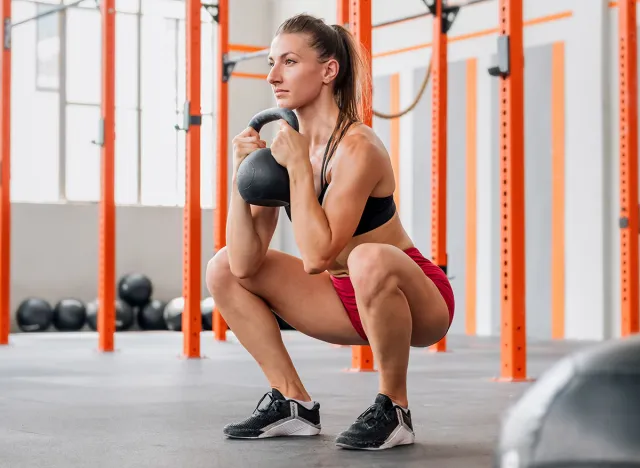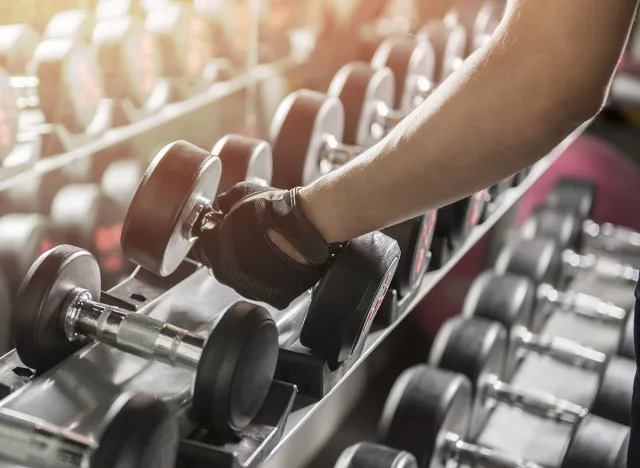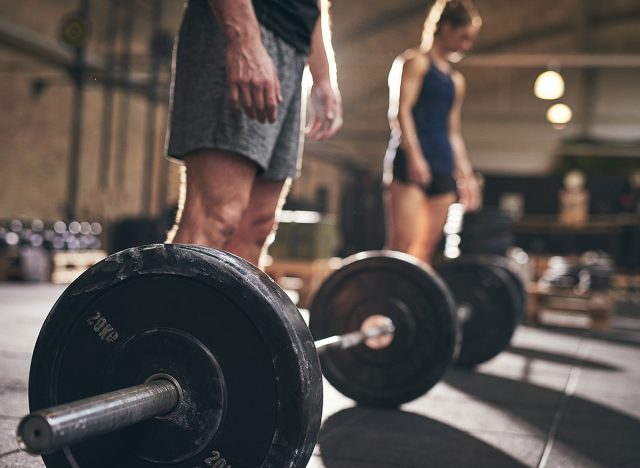7 Insider Secrets from Personal Trainers for Optimal Fitness

Personal trainers are experts when it comes to fitness and nutrition—after years of experience, they know what works and what doesn't. "Personal trainers are experts in their field and can provide valuable information about exercise, nutrition, and overall wellness," according to the Southern California Health Institute. "They can teach you new exercises and proper form to make sure you are getting the most out of your workouts." Here are 7 fitness tips personal trainers swear by for optimal fitness.
Strength Before Cardio

Save the cardio for after your strength training sessions. "Strength train before doing cardio for maximum fat burn and energy efficiency," Virgin Active Head of Group Exercise Israel Rivera tells Cosmopolitan. "Save your glycogen stores to push harder and heavier during your strength training workouts to build lean muscle mass. Once those stores are depleted your body will resort to fat as fuel for exercising. So, bang the cardio out after your strength training session to achieve a fitter, leaner you."
Too Much Too Soon

Make realistic goals and start off slowly. "A lot of people jump into doing too much, or going too hard, too soon," personal trainer Zoe Mckenzie tells The Guardian. "This often results in a boom and bust approach of doing lots, then burning out and doing nothing. Starting low and going slow is key to building up whatever activity you are doing."
Technique Is Everything

If your technique is off, your workout will not be as effective. "It's much more important to train with the correct technique rather than train heavy," Master Trainer Dorota Maslewska tells Cosmopolitan. "You might learn some exercises by watching friends or others in the gym, but sometimes what you see isn't safe."
Hit the Weight Room

Don't be afraid of lifting weights for optimal fitness. "As a personal trainer, strength training is the No. 1 type of exercise I recommend to live longer," certified fitness trainer and nutrition coach Patricia Greaves tells CNBC. "Research has even shown that people in their 70s with mobility issues can boost their longevity with a strength-training program."
RELATED: 15 Quick Ways to Lose Body Fat Percentage in a Week
Get a Workout Buddy

Work out with a friend to make exercise more fun. "Your friend can be your personal trainer," personal trainer Holly Davidson tells The Guardian. "If you agree, 'We're going to meet at a certain time and we're going to do a workout,' then it gives you more motivation to actually show up and get it done. Second, both of you are going to have ideas on what exercises you're going to do."
Food Prep

Food prep is a great tool to support a healthy diet without having to constantly make decisions about food. "Meal prepping is so important," certified personal trainer Matt Stewart tells Boston Magazine. "Pick a day on the weekend to do your food shopping and then cook your proteins and vegetables for the week. Not having healthy meals prepared caused me to always eat out at fast food restaurants. Eating hamburgers and French fries every day might sound fun, but it will wreck any weight loss goals you have."
RELATED: 5 Truths About Why You Aren't Losing Weight
Just Move

Can't hit the gym? Any walking is better than no movement at all. "If you want to build up your cardiovascular fitness, then go for a brisk walk," Davidson says. "If you're not getting breathless, then find a hill and walk briskly up that and you're going to really feel it a lot more."
💪🔥 Body Booster: Any movement is good for your health—start slow and build up.




